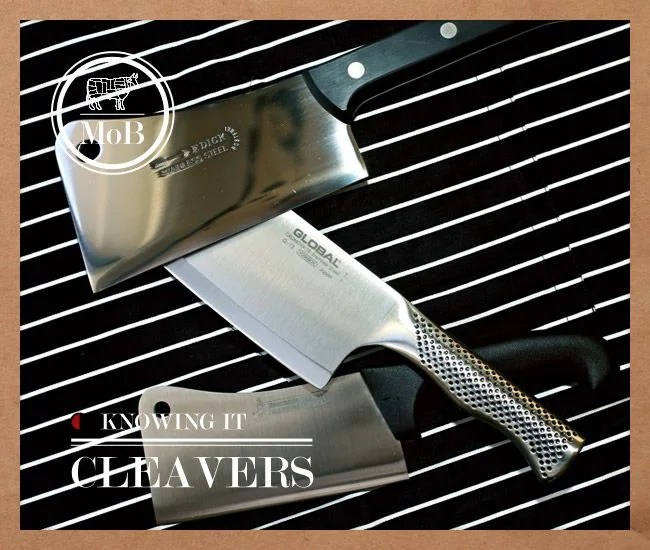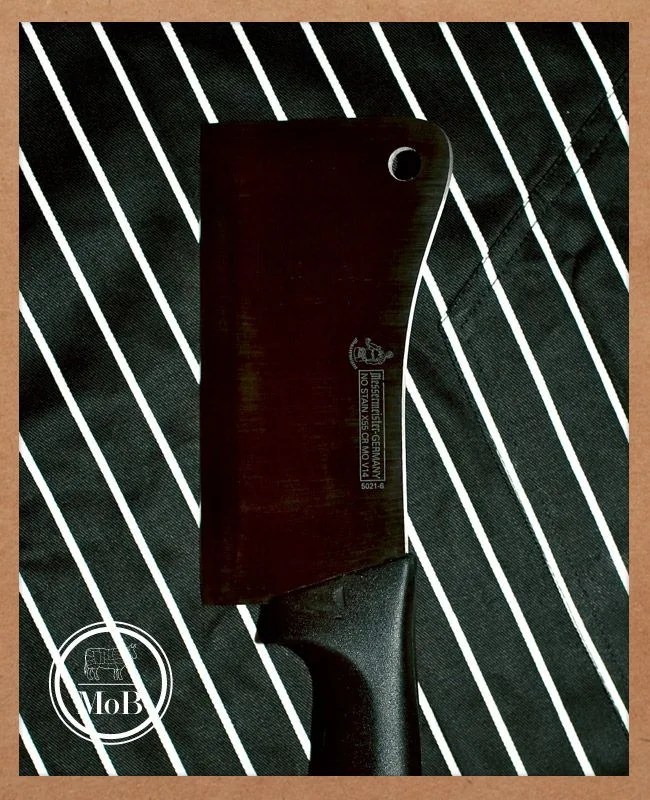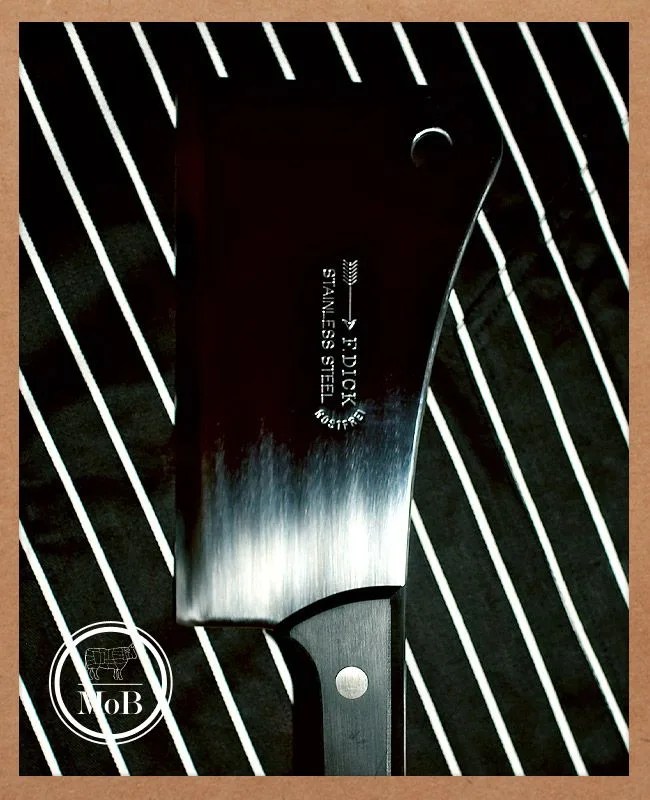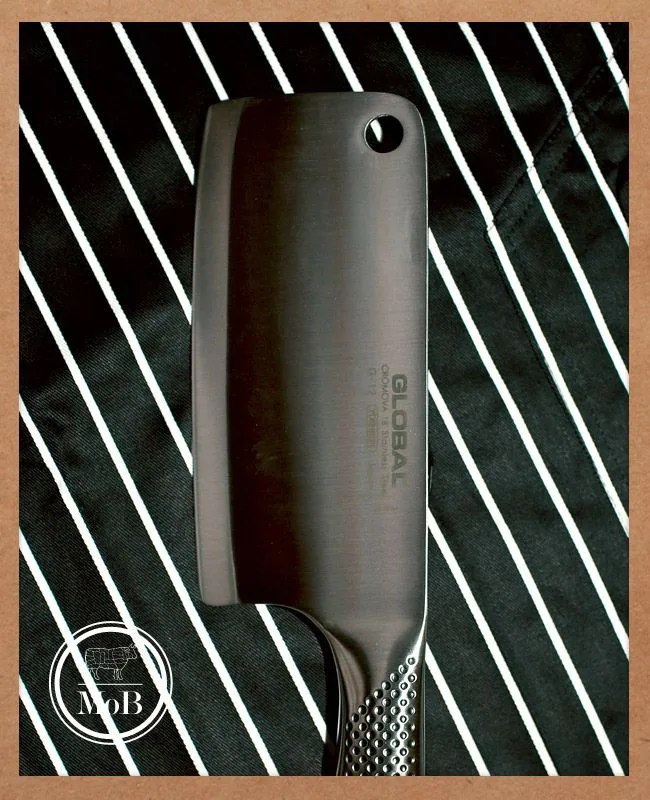 Eric Yang
Eric YangAh, the meat cleaver. Bucking the tapered and svelte designs of traditional blades, these husky boys of the knife world were developed for one singular purpose — to serve as the machete of the kitchen. Their fatter, squared-off business ends bring added weight and toughness to the task of dismembering, leveraging sheer momentum to breeze through the thick meat, bones and cartilage of animals and clumsy cooks alike. A blunt instrument by design, the cleaver’s blade actually becomes brittle when sharpened to a razor’s edge, reducing its lifespan and effectiveness. While using other knives effectively requires some schooling, if you’ve used a hammer before, you know how to wield a cleaver. It’s the reason why they’re so capable, and also so dangerous.
A tiny hole in the blade, meant for hanging the knife on butcher’s belts and hooks, typically distinguishes the meat-hacking variety from the lighter vegetable and Chinese cleavers (the latter is essentially the chef knife of the eastern world and a different beast altogether). The real fail-safe when shopping around, though, boils down to weight and feel — the heavier the cleaver, the better.
Speaking of shopping for cleavers, keep reading after the jump to find our advice for buying a big chophuna of your own.

Take Note:
Not Just For Mauling
It’s made for butchering, but other parts of the cleaver can be put to good use around the kitchen as well.
• Use the blunter top edge to pound and tenderize meat.



